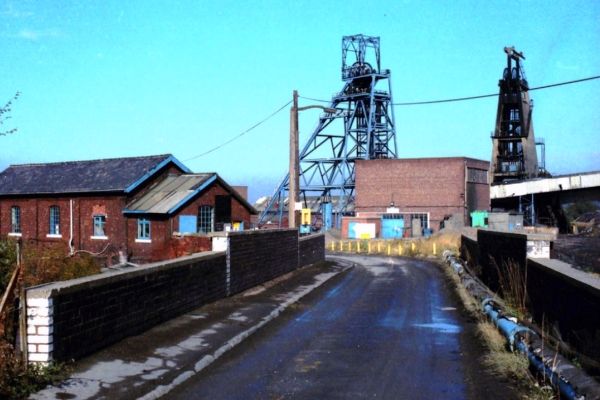 |
Northern Mine Research Society Registered Charity 326704 |
Manvers Main Colliery
 |
Copyright © L Hirst and used with his kind permission |
In 1888 the original company, which was presumably a simple partnership, took limited liability and became the Manvers Main Colliery Co. Ltd. Interestingly the old name appears in the List of Mines until 1901, when it became the Manvers Main Collieries Ltd. In 1906 the first parts of what became a major coke and by-products plant were built. This gave the colliery a ready market and added value to its produce.
In May 1942 the Barnsley seam at No.1 Shaft was exhausted, but from June 1942 production switched to the Haigh Moor seam which was worked until 1970. The Winter seam was also worked in 1941 and 1942. The Meltonfield seam was worked at No.1 Shaft from 1925 to 1930 and from 1935 to 1946. Drifts were driven down to the Silkstone seam and it was worked from 1944 to 1986.
At No.2 Shaft the last Barnsley coal was got in 1918, and from 1919 to 1922 production came from the Parkgate. After 1922 all Parkgate coal came from No.3 Shaft, which had been winding from that seam since 1904.
Upon nationalisation a plan to combine Barnburgh, Kilnhurst, Manvers Main and Wath Main was conceived. Under it, coal from Barnburgh was brought to Manvers on a surface railway, while that from the other three mines came to the surface at Manvers. This rationalisation saved on the cost of modernising winding plants, and ended the need for three coal washeries and other facilities. Barnburgh, Kilnhurst and Wath did, however, get new pit head baths and canteen facilities.
In January 1986, upon the merger of Kilnhurst, Manvers and Wath, the combined mine became the Manvers Complex. The Swallow Wood seam, which was opened in 1971, worked until 1987 when, under a survival plan, Manvers continued with one face in the Newhill seam. It was insufficient, however, and Manvers closed on March 25th 1988. The surface plant was demolished in 1989.
Further reading:
- NMRS Records, Gazetteer of British Collieries
- NMRS Records, Index of Mining Companies - BT31/4041/25797 (1888)
- Sections of Strata of the Yorkshire Coalfield, Midland Institute of Mining Engineers, 1927
- Hill, A. The South Yorkshire Coalfield: A History and Development (Stroud: Tempus, 2002)
- Hill, A. Colliery Ventilation (Matlock: Peak District Mines Historical Society Ltd, 2000)
- Hill, A. Coal: A Chronology for Britain (NMRS, British Mining No.94, 2012)